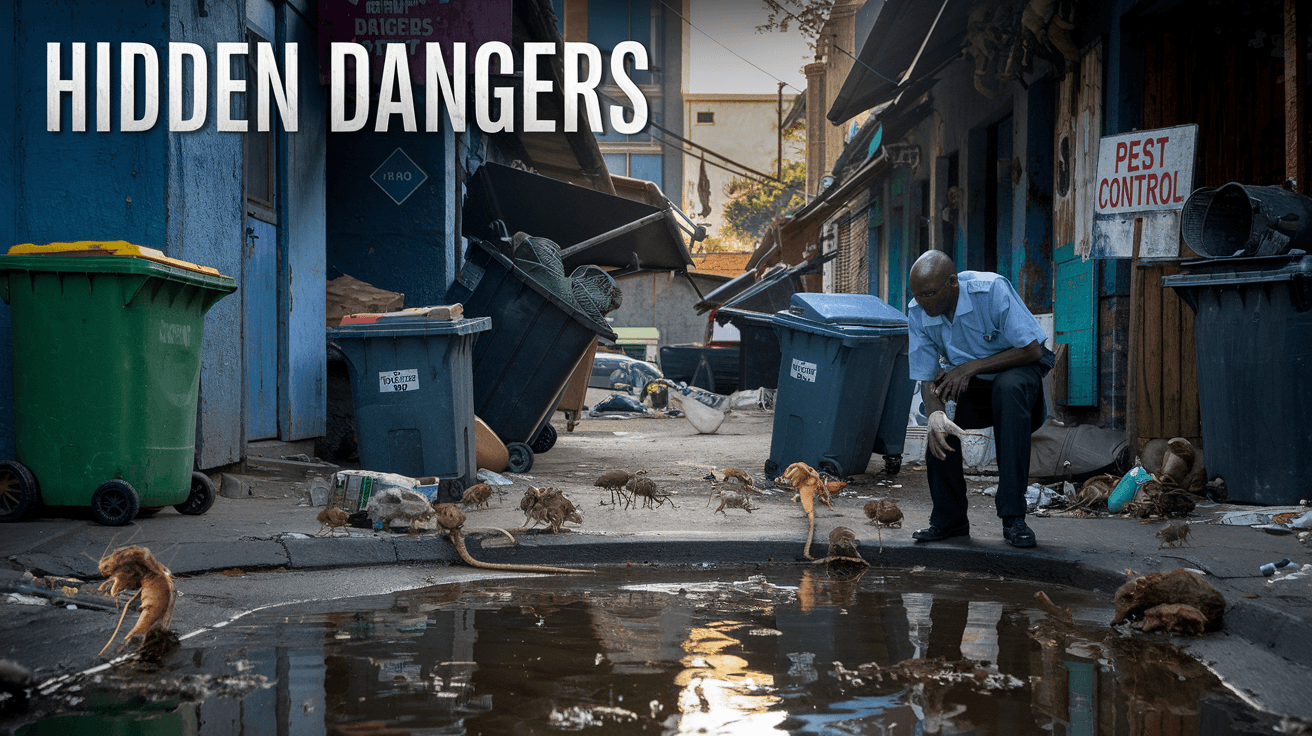
Hidden Dangers: Pests That Threaten Nairobi’s Health
Danger lurks in the shadows of Nairobi’s bustling streets and cozy homes. While we go about our daily lives, an unseen army of pests is quietly invading our spaces, posing serious threats to our health and well-being. From disease-carrying mosquitoes to destructive rodents, these unwelcome guests are more than just a nuisance – they’re a ticking time bomb of potential health hazards.
But how much do you really know about these hidden dangers? Are you aware of the common pests that call Nairobi home, or the serious health risks they bring with them? Understanding the enemy is the first step in protecting yourself and your loved ones.
In this eye-opening exploration, we’ll unmask the culprits behind Nairobi’s pest problem, delve into the environmental factors fueling their spread, and arm you with effective strategies to keep these invaders at bay. From government initiatives to personal protection measures, we’ll cover everything you need to know to safeguard your health in the face of this growing menace. Let’s pull back the curtain on Nairobi’s hidden pest problem and take control of our urban ecosystem!
Common Pests in Nairobi
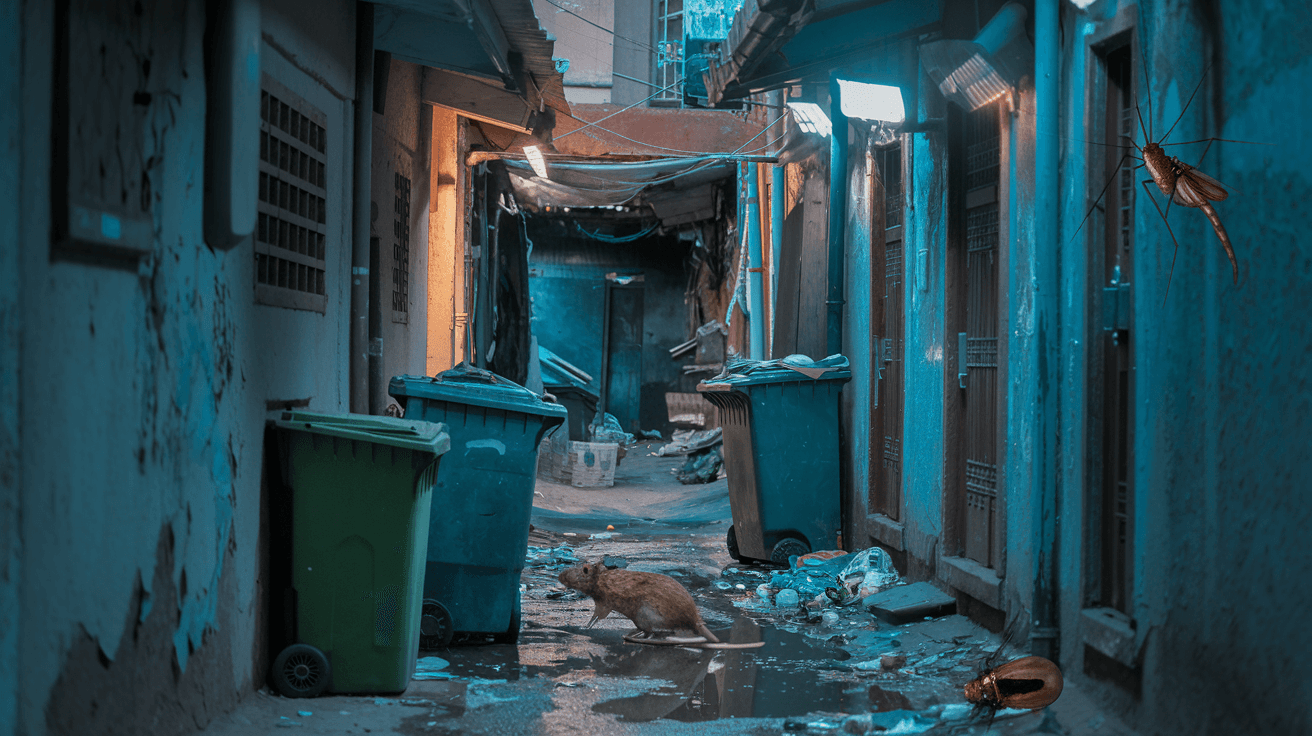
Mosquitoes: Carriers of Malaria and Dengue
Nairobi’s warm, humid climate provides an ideal breeding ground for mosquitoes, particularly the Anopheles and Aedes species. These tiny insects pose a significant threat to public health, transmitting potentially fatal diseases such as malaria and dengue fever.
| Disease | Mosquito Species | Symptoms |
|---|---|---|
| Malaria | Anopheles | Fever, chills, fatigue |
| Dengue | Aedes aegypti | High fever, severe headache, joint pain |
Rats: Spreaders of Leptospirosis
Rats are ubiquitous in Nairobi’s urban landscape, thriving in densely populated areas and poorly managed waste sites. These rodents are notorious carriers of leptospirosis, a bacterial infection that can lead to severe kidney and liver damage.
Cockroaches: Harbingers of Allergies and Asthma
Cockroaches are not just a nuisance; they’re a serious health hazard. These resilient insects are common in Nairobi’s households and commercial establishments, contributing to:
- Allergic reactions
- Asthma exacerbation
- Spread of harmful bacteria
Bed Bugs: Silent Nocturnal Invaders
While not disease carriers, bed bugs are a growing concern in Nairobi. These tiny, blood-sucking insects cause:
- Skin irritations and rashes
- Sleep disturbances
- Psychological distress
Understanding these common pests is crucial for effective prevention and control. Now, let’s explore the specific health risks associated with these pest infestations in Nairobi.
Health Risks Associated with Pest Infestations
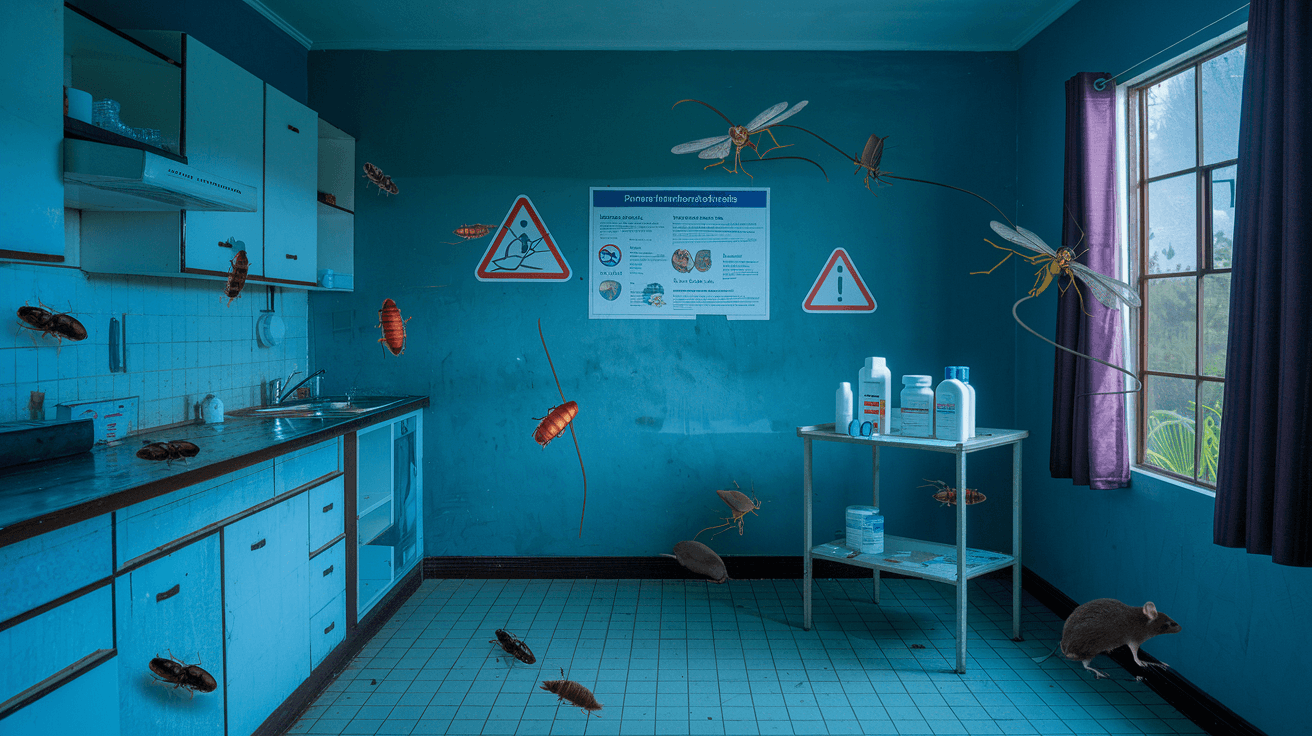
Vector-Borne Diseases
Vector-borne diseases pose a significant threat to Nairobi’s residents due to pest infestations. Mosquitoes, ticks, and fleas are common vectors that transmit various illnesses:
| Vector | Diseases Transmitted |
|---|---|
| Mosquitoes | Malaria, Dengue, Chikungunya |
| Ticks | Lyme disease, Tick-borne encephalitis |
| Fleas | Plague, Typhus |
These diseases can lead to severe health complications if left untreated, making pest control crucial for public health.
Foodborne Illnesses
Pests like rodents and cockroaches contaminate food sources, leading to foodborne illnesses:
- Salmonella
- E. coli
- Listeria
These pathogens can cause severe gastrointestinal issues, particularly dangerous for children and the elderly.
Respiratory Problems
Pest infestations contribute to respiratory issues through:
- Allergens from pest droppings and shed skin
- Mold growth in pest-damaged structures
- Airborne particles from pest waste
Asthma attacks and allergic reactions are common consequences, especially in poorly ventilated urban dwellings.
Psychological Impact
The presence of pests can have significant psychological effects on residents:
- Anxiety and stress from constant pest encounters
- Sleep disturbances due to nocturnal pest activity
- Social stigma associated with visible infestations
These mental health impacts can lead to decreased quality of life and productivity. Now that we’ve explored the health risks, let’s examine the pest hot spots in Nairobi where these dangers are most prevalent.
Identifying Pest Hot Spots in Nairobi
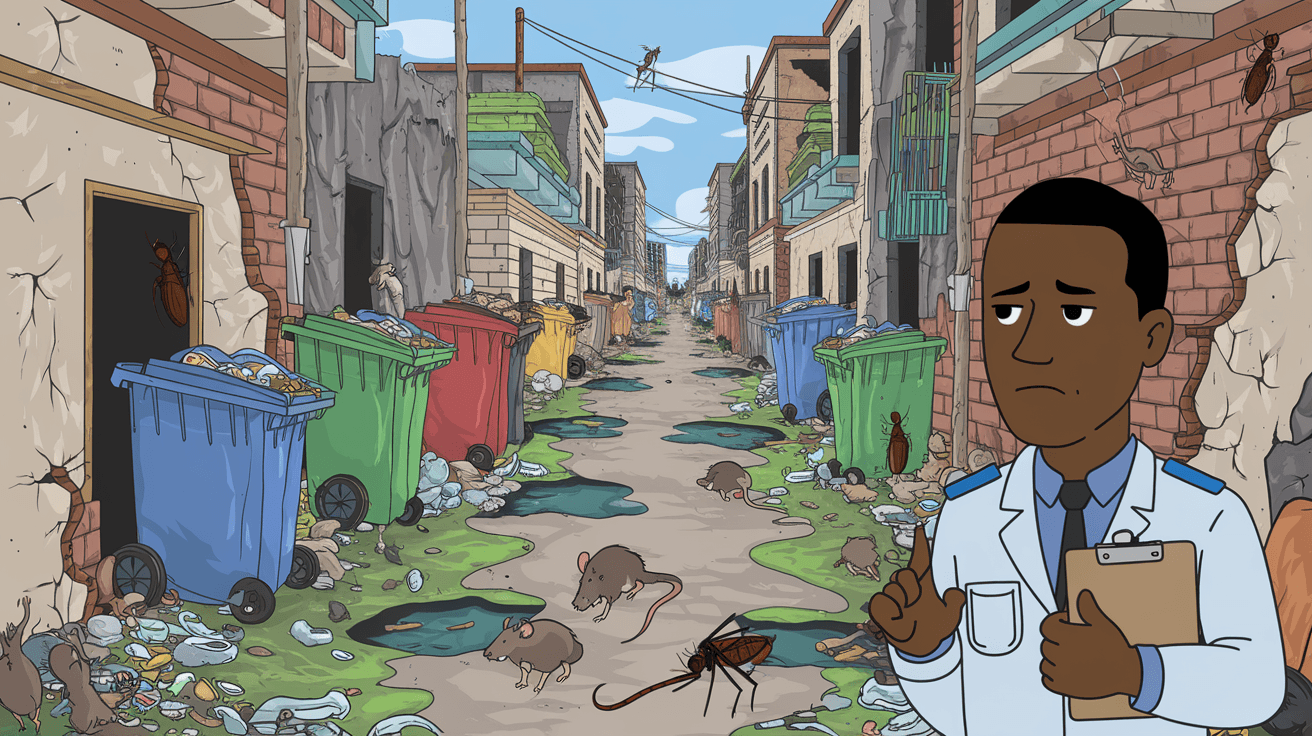
Slum Areas and Informal Settlements
Nairobi’s slum areas and informal settlements are prime breeding grounds for pests due to poor sanitation and overcrowding. These densely populated areas often lack proper waste management systems, leading to accumulation of garbage that attracts rodents and insects.
| Pest Type | Common in Slums | Health Risks |
|---|---|---|
| Rats | Yes | Leptospirosis, Typhus |
| Cockroaches | Yes | Asthma, Salmonella |
| Mosquitoes | Yes | Malaria, Dengue |
Garbage Dump Sites
Illegal dumpsites scattered across Nairobi serve as ideal habitats for various pests. These sites provide ample food and shelter for rodents and insects, contributing to their rapid proliferation.
Stagnant Water Bodies
Nairobi’s poorly maintained drainage systems and seasonal flooding create numerous stagnant water bodies, perfect for mosquito breeding. Areas near rivers and in low-lying regions are particularly vulnerable.
Food Markets and Restaurants
The city’s bustling food markets and restaurants, while vital for the economy, can inadvertently become pest hotspots if proper hygiene practices are not maintained. Improper food storage and waste disposal attract flies, cockroaches, and rodents.
Overcrowded Residential Areas
High-density residential areas, especially those with inadequate waste management, are susceptible to pest infestations. Shared living spaces and poor building maintenance can exacerbate the problem.
- Key factors contributing to pest hotspots in residential areas:
- Improper garbage disposal
- Lack of regular pest control measures
- Structural defects in buildings
- Poor personal hygiene practices
Now that we’ve identified the major pest hotspots in Nairobi, let’s explore the environmental factors that contribute to pest proliferation in these areas.
Environmental Factors Contributing to Pest Proliferation
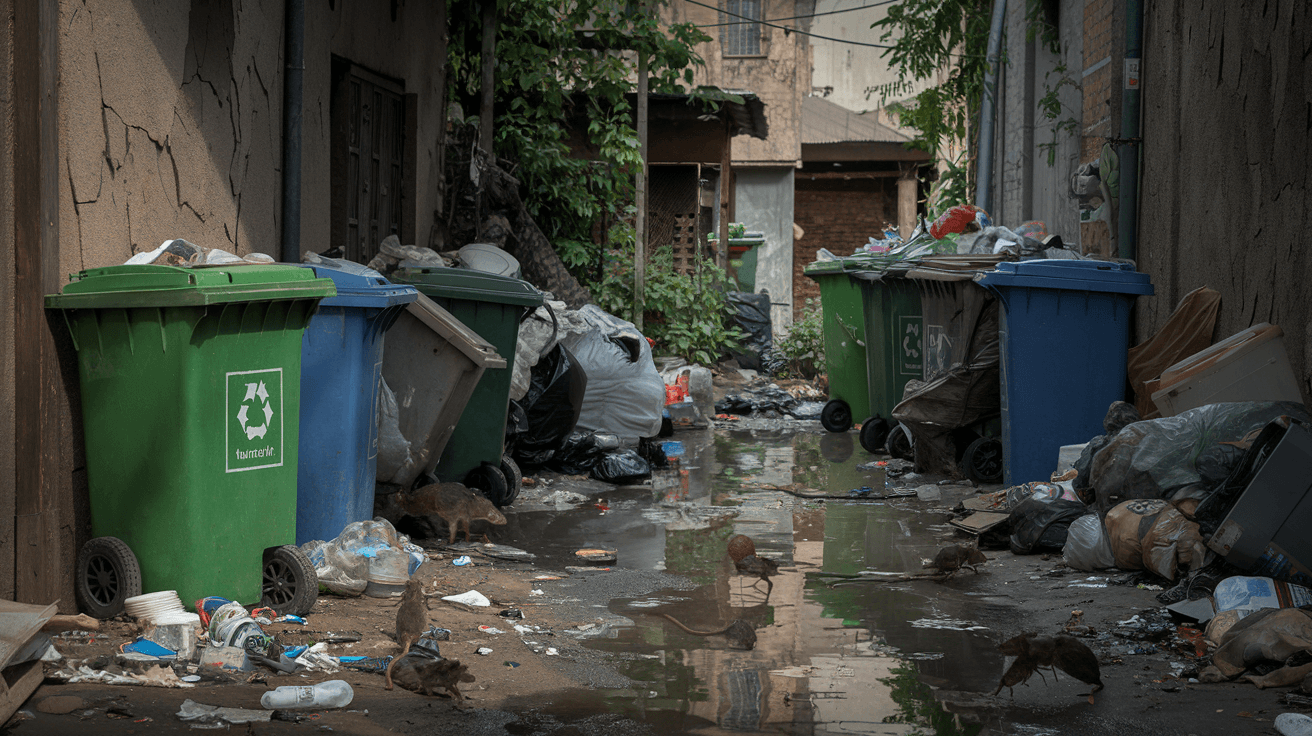
Poor Sanitation and Waste Management
Poor sanitation and inadequate waste management practices in Nairobi significantly contribute to pest proliferation. Uncollected garbage, clogged drainage systems, and improper disposal of organic waste create ideal breeding grounds for various pests. Here’s a breakdown of the main issues:
| Issue | Impact on Pest Proliferation |
|---|---|
| Uncollected garbage | Attracts rodents and flies |
| Clogged drains | Provides breeding sites for mosquitoes |
| Food waste | Sustains cockroach populations |
To combat these issues, residents and authorities must work together to:
- Implement regular garbage collection schedules
- Maintain clean and functional drainage systems
- Promote proper waste segregation and disposal
Inadequate Urban Planning
Nairobi’s rapid urbanization, coupled with inadequate planning, has created environments conducive to pest infestations. Key factors include:
- Overcrowded informal settlements
- Lack of proper housing infrastructure
- Insufficient pest control measures in building designs
These conditions provide ample hiding spots and easy access to food and water for pests, making it challenging to control their populations effectively.
Climate Change and Increased Rainfall
Climate change has led to altered weather patterns in Nairobi, particularly increased rainfall. This shift has several implications for pest proliferation:
- Higher humidity levels favor insect reproduction
- Standing water after heavy rains creates mosquito breeding sites
- Warmer temperatures accelerate pest life cycles
As these environmental factors continue to evolve, it’s crucial for Nairobi’s residents and authorities to adapt their pest control strategies accordingly. The next section will explore effective pest control measures tailored to address these environmental challenges.
Effective Pest Control Strategies
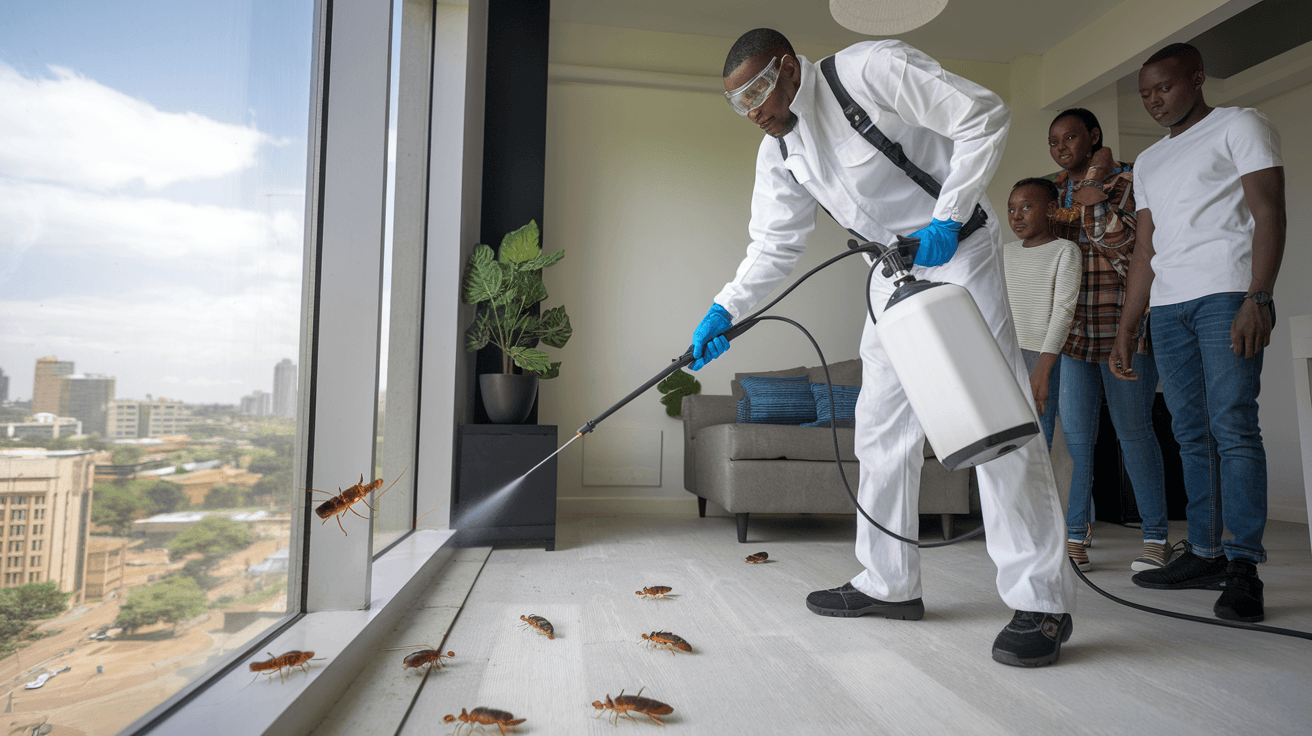
Integrated Pest Management (IPM)
Integrated Pest Management (IPM) is a holistic approach to pest control that combines various strategies to minimize pest populations while reducing reliance on chemical pesticides. In Nairobi, IPM has proven to be an effective method for managing urban pests.
Key components of IPM include:
- Prevention
- Monitoring
- Cultural controls
- Biological controls
- Chemical controls (as a last resort)
| IPM Strategy | Description | Benefits |
|---|---|---|
| Prevention | Sealing entry points, proper sanitation | Reduces pest attraction and access |
| Monitoring | Regular inspections, pest identification | Early detection and targeted control |
| Cultural controls | Modifying habitats, removing food sources | Discourages pest establishment |
| Biological controls | Introducing natural predators | Environmentally friendly pest reduction |
| Chemical controls | Targeted pesticide application | Effective when other methods fail |
Community-Based Interventions
Community involvement is crucial for successful pest control in Nairobi. Engaging residents in pest management efforts can lead to more sustainable and widespread results.
Improving Urban Infrastructure
Enhancing Nairobi’s urban infrastructure plays a vital role in pest control. Proper waste management, drainage systems, and building maintenance can significantly reduce pest habitats.
Public Education and Awareness Campaigns
Educating the public about pest control is essential for long-term success. Awareness campaigns can help residents understand:
- Proper waste disposal methods
- Identifying common pests
- Reporting infestations to authorities
- Implementing basic pest prevention measures
By combining these strategies, Nairobi can effectively combat pest issues and improve overall public health. The next section will explore government and NGO initiatives that support these pest control efforts.
Government and NGO Initiatives

Vector Control Programs
Vector control programs in Nairobi play a crucial role in combating pest-borne diseases. These initiatives focus on reducing the population of disease-carrying pests, particularly mosquitoes, which are responsible for spreading malaria, dengue, and other illnesses.
| Program | Target Pest | Method |
|---|---|---|
| Indoor Residual Spraying | Mosquitoes | Insecticide application on walls |
| Larviciding | Mosquito larvae | Treatment of breeding sites |
| Bed Net Distribution | Mosquitoes | Provision of insecticide-treated nets |
Sanitation Improvement Projects
NGOs and government agencies are working together to enhance sanitation in Nairobi, which directly impacts pest populations. These projects include:
- Upgrading sewage systems in informal settlements
- Implementing waste management programs
- Educating communities on proper waste disposal
Collaborative Efforts with International Organizations
Nairobi has partnered with several international organizations to strengthen its pest control initiatives:
- World Health Organization (WHO): Providing technical expertise and resources
- UNICEF: Supporting water and sanitation projects
- Bill & Melinda Gates Foundation: Funding innovative pest control research
Policy Implementation and Enforcement
The Nairobi City County has implemented strict policies to address pest-related health risks:
- Mandatory pest control measures for businesses
- Regular inspections of food establishments
- Fines for property owners who neglect pest control
These government and NGO initiatives are essential in the fight against pests and their associated health risks in Nairobi. By combining vector control, sanitation improvements, international collaboration, and policy enforcement, the city is making significant strides in protecting public health.
Personal Protection Measures

Proper Food Storage and Handling
Effective food storage and handling practices are crucial in deterring pests and protecting your health. Here are some key strategies:
- Store dry goods in airtight containers
- Keep fruits and vegetables in the refrigerator
- Clean up spills and crumbs immediately
- Use sealed trash bins with tight-fitting lids
| Food Type | Storage Method | Benefits |
|---|---|---|
| Grains | Airtight containers | Prevents weevils and moths |
| Produce | Refrigeration | Deters fruit flies and ants |
| Leftovers | Sealed containers | Reduces odors that attract pests |
Use of Insecticide-Treated Nets
Insecticide-treated nets (ITNs) are an effective tool against mosquitoes and other flying insects:
- Use ITNs over beds and in doorways
- Ensure proper installation for maximum coverage
- Replace nets every 2-3 years for optimal effectiveness
Regular Home Inspections and Maintenance
Routine inspections can help identify and address pest issues early:
- Check for cracks and crevices in walls and floors
- Inspect plumbing for leaks
- Look for signs of pest activity (droppings, gnaw marks)
- Seal entry points to prevent pest intrusion
Natural Pest Repellents
Natural repellents can be an eco-friendly alternative to chemical pesticides:
- Plant pest-repelling herbs like mint and lavender
- Use essential oils like citronella and eucalyptus
- Create vinegar-based sprays for ant control
Now that we’ve covered personal protection measures, let’s explore the initiatives taken by the government and NGOs to combat pest-related health risks in Nairobi.
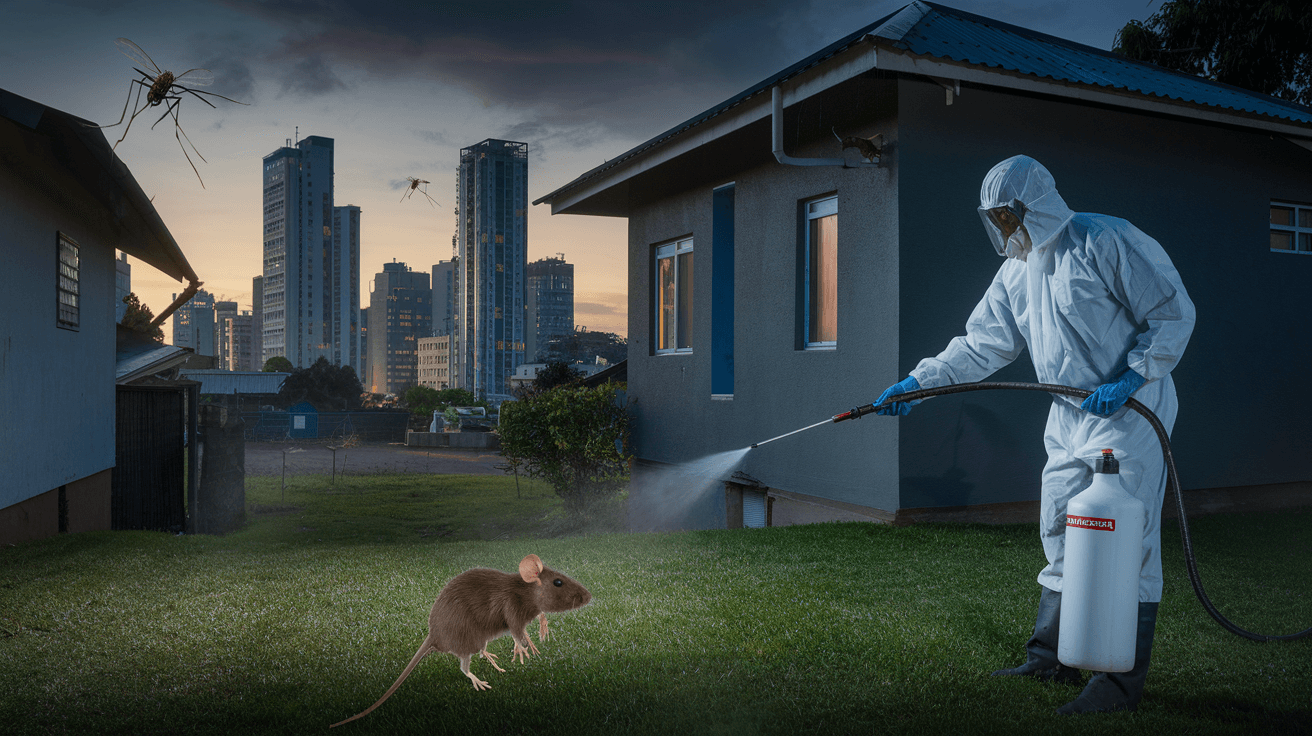
Nairobi’s diverse ecosystem harbors a range of pests that pose significant health risks to its residents. From disease-carrying rodents to destructive termites, these unwanted invaders can wreak havoc on both human health and property. Understanding the common pests, their preferred habitats, and the environmental factors that contribute to their proliferation is crucial for effective pest management.
To safeguard your health and home, implementing a multi-faceted approach is essential. This includes adopting personal protection measures, supporting government and NGO initiatives, and employing effective pest control strategies. By staying vigilant and taking proactive steps, we can collectively work towards creating a healthier, pest-free environment for all of Nairobi’s inhabitants.